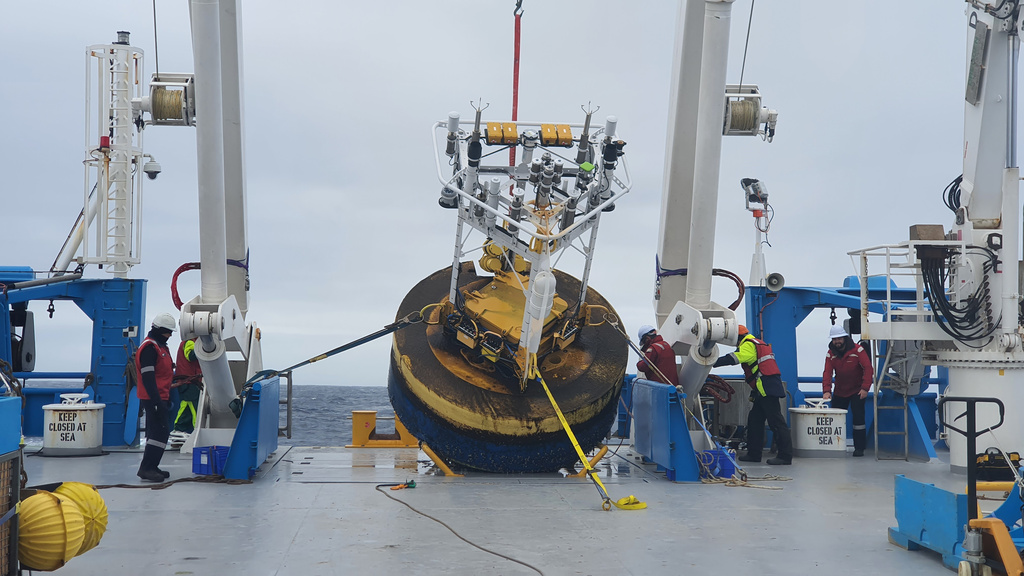RV Investigator recently returned from a voyage which had been delayed by the COVID-19 pandemic.
The moorings were deployed into a harsh, remote location in the Southern Ocean, which is particularly vulnerable to extreme weather including very large waves, strong currents and severe storms, presenting significant technical and engineering challenges.
The two moorings, referred to as the Southern Ocean Flux Station (SOFS) and Sub-Antarctic Zone sediment trap (SAZ) moorings were successfully recovered and replaced by new SOFS and SAZ moorings which are scheduled to be recovered in April 2021.
IMOS is particularly pleased with the successful recovery of the SOFS mooring after an extended deployment of 16 months and two winter seasons due to the voyage delay.
Dr Elizabeth Shadwick, who leads the IMOS Southern Ocean Time Series (SOTS) Observatory sub-Facility and is a senior research scientist at CSIRO, was the Chief Scientist on this first research voyage of the RV Investigator since the shutdown of sea operations due to the COVID-19 pandemic.
“We have sustained the longest time series of Southern Ocean observations operated by any nation, contributing to the global effort to understand ocean dynamics and their role in climate and responses to anthropogenic emissions,” says Dr Shadwick.
The sensor records and sample collections achieved with moorings at SOTS increase our understanding of climate and carbon cycle processes in Subantarctic waters – which are now recognized as globally important in removing CO2 from the atmosphere.
This voyage into the Southern Ocean will produce science of global significance and is made possible by the strong partnership between Australia’s national Integrated Marine Observing System and the CSIRO Marine National Facility (MNF).
“We are grateful for the engineering expertise of the moorings group at CSIRO, the skilful deck operations undertaken by Phil De Boer, Tim Lane, Jim LaDuke and the crew of the RV Investigator during some difficult weather conditions. We thank the MNF staff (Rod Palmer, Anoosh Sarraf, Phil Vandenbosch, and Francis Chui) for their support with the CTD and computing and network access on board, MNF Voyage Managers Linda Gaskell and Lisa Woodward for voyage management, and finally, Master Adrian Koolhof, and 1st, 2nd and 3rd Mates (A. Roebuck, J. Hokin, and S. Edwards) for excellent ship handling during mooring operations and during transit to and from the site,” says Dr Shadwick.
The moorings are operated through a partnership between IMOS, CSIRO Marine National Facility, CSIRO, Bureau of Meteorology, and the Australian Antarctic Program Partnership (AAPP).
